As the sun sets on a warm summer evening, the air is filled with the siren song of aromatic herbs, spices, and rich coconut milk. The sounds of sizzling oil and bubbling broth waft through the open windows, inviting you to enter a world of flavors and colors. Throughout Indonesia, this vibrant dish has captured the hearts and palates of millions: Lontong Sayur Lodeh.

Sayur Lodeh is a dish that generations of Indonesians have enjoyed, and it has become a staple in many households and restaurants across the country. At its core, this dish is a hearty soup made with a rich, flavorful broth infused with a blend of fragrant spices, coconut milk, and various fresh veggies. But what truly sets Lontong Sayur Lodeh apart is the addition of lontong, a banana-leaf-cooked compressed jasmine rice cake that soaks up the savory broth and adds a satisfying chewy texture to each bite.
This dish is a feast for the senses and a symbol of Indonesia's rich culinary heritage. With its gorgeous colors and complex flavors, Lontong Sayur Lodeh is a true masterpiece of Indonesian cuisine.
Grab your ingredients, and plate of martabak to snack on while you cook, because this is going to be your new favorite recipe!
Jump to:
- 🥰Why you are going to adore the ever-loving heck outta this recipe
- 🍆Notable ingredients in this recipe
- 🤯Variations of Sayur Lodah.
- 📖 How to make perfect Sayur Lodeh
- 💡Serving Ideas
- 👉Top tip
- 🤷♀️FAQ
- 💣 Bangin' dishes to smash with sayur lodeh:
- Lontong Sayur Lodeh (Indonesian Vegetable Stew With Compressed Rice Cakes)
🥰Why you are going to adore the ever-loving heck outta this recipe
- Quick and easy as heck: Despite its complex flavors and well-rounded nutritional profile, Lontong Sayur Lodeh is a dish that is surprisingly quick and easy to make. With a few simple ingredients and less than 30 minutes of cooking time, you can have a delicious and satisfying meal on the table in no time.
- Vegan and gluten-free: The dish is not just vegetarian, but like my urap sayur, it is naturally vegan and gluten-free, making it an inclusive and satisfying meal that can be enjoyed by everyone. No chicken broth or shrimp paste here. Because I have that song "unda' the sea" stuck in my head, and I could never kill and eat that guy.
- About as customizable as your Long Island Boyfriend’s Honda Civic: You can easily switch up the vegetables depending on what's in season or what you have on hand. For example, you can add steamed pumpkin, or butternut squash for a sweeter flavor, or kale or spinach for an extra dose of greens.
- ✅Tested and Approved Worldwide: Like all the recipes on my blog, this Sayur Lodeh has been meticulously fine-tuned not only by me but by a team of dedicated recipe testers around the world, including in Indonesia where the dish is from. No matter where you are on the planet, rest assured it's been tested to work everywhere!
🍆Notable ingredients in this recipe
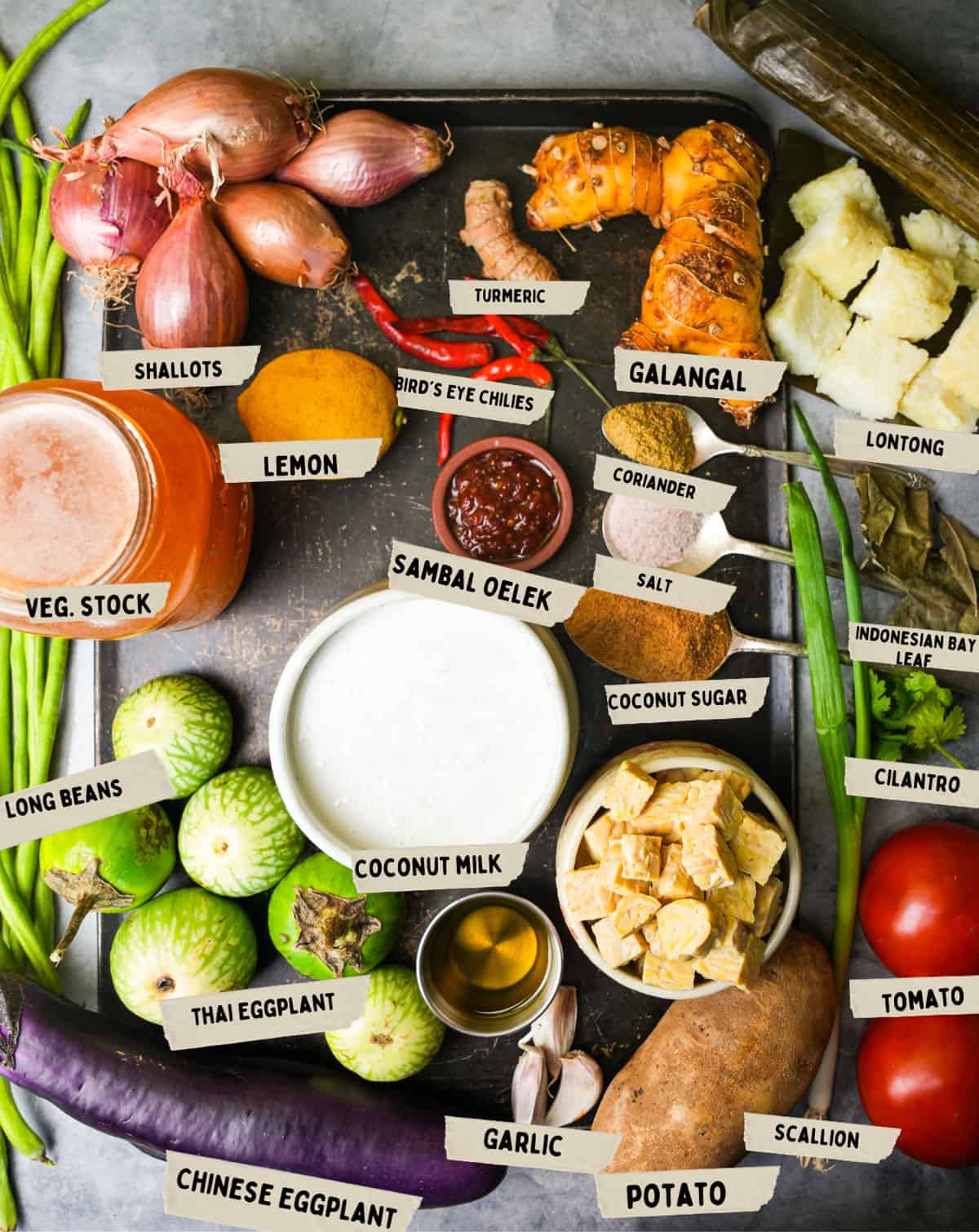
Galangal
Galangal or 'lengkuas', is a gnarly root with an inimitable flavor commonly used in Southeast Asian cuisine. If you can’t get it, you can substitute ginger, but the flavor is harsher compared to galangal. Galangal has a spicy, citrusy, and slightly floral flavor that differs from regular ginger. It is less pungent and has a milder, sweeter taste than ginger, with hints of pine and camphor.
Daun Salam
Indonesian bay leaves have a slightly bitter, almost tobacco-like and savory flavor and are used to add depth to dishes. I know my description of it isn’t making it sound yummy, but it really does provide a wonderful flavor to broths and marinades. If you can’t get them, they can be substituted with standard or Indian bay leaves.
Bird's eye chilies
AKA Thai chilies or 'cabe rawit' in Indonesian and 'cili padi' in Malaysian, are small and spicy peppers commonly used in Southeast Asian cuisine. For a milder option, substitute with jalapeño, fresno or serrano peppers. Just keep in mind the bird’s eye chilies are much smaller that jalapeño. So use about ⅓ of a jalapeño for every bird’s eye chili if you are substituting.
Turmeric
Fresh turmeric, or 'kunyit' is a bright yellow root with a slightly bitter, earthy flavor. It can be substituted with turmeric powder which is readily available and almost definitely already in your spice cabinet!
Fresh turmeric has remarkable anti-inflammatory and antioxidant properties, and is believed to help alleviate symptoms of arthritis, promote heart health, and support the immune system. I drink tea made from freshly grated turmeric and ginger several times a week, and it keeps me feeling like a gosh darned superhero.
Snake beans
AKA long beans or 'kacang panjang' in Indonesian and 'sawi panjang' in Malaysian, are extremely long and slender beans used in many Southeast Asian dishes such as sambal goreng tempeh and Sitaw. Green beans or haricots verts can be used as a substitute. But just keep in mind the long beans are (believe it or not…) LONG. So if substituting for regular green beans, you should use 5-6 to replace each snake bean.
Thai eggplant
Terung pipit in Indonesian or 'terung hijau' in Malay, are small round eggplants commonly used in Thai and Indonesian cuisine. Chinese or Japanese eggplant can be used as a substitute. The Thai eggplant are tiny, so if replacing them, use one Chinese eggplant for every 2-3 Thai eggplants in the recipe. Save regular large black eggplants for making dishes like Soslu Patlican and Şakşuka with.
Lontong
Lontong is a traditional Southeast Asian dish made from compressed rice cake. It is also known as nasi himpit. I like to think of it as a protein, even though it is not technically one, because you can use it almost like you would use tempeh or tofu, making it super-versatile. Making it at home is easy with a few simple steps and ingredients, and I have a great lontong recipe you can follow to make it flawlessly on your first go, by either making steamed rice cakes or boiling them. If you can’t make it or find it at your local Asian market, you can make sayer lodeh without lontong, and it’s still BANGIN’.
See the recipe card towards the bottom of this page for the complete ingredient list and exact quanities.
🤯Variations of Sayur Lodah.
- Protein swap-a-roo: Instead of tempeh, use young green jackfruit, tofu or seitan as a protein source. I have a killer seitan recipe you can use.
- Different veggies: Use a mix of other vegetables such as kabocha squash, carrots, cauliflower, or bell peppers to add more flavors and textures to the soup.
- Fungus funk: Add some shiitake, enoki, or oyster mushrooms (which also make killer vegan shawarma) for an earthy umami flavor.
📖 How to make perfect Sayur Lodeh
You wanna see how this yummy Indonesian coconut milk stew gets made? Allllrighty, I will walk you through the whole process. Or you can follow along with the easy-to-print recipe card towards the bottom of this page.
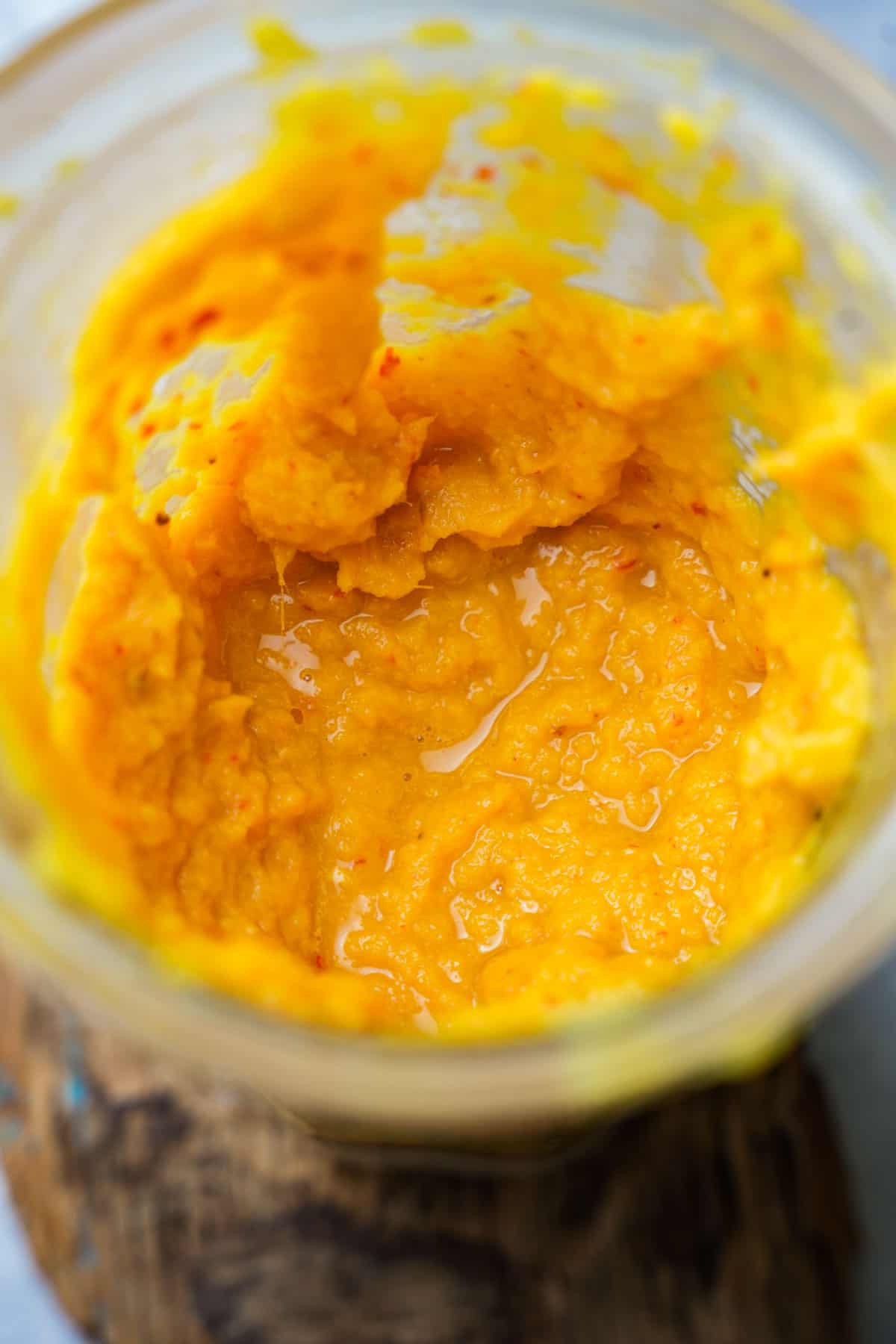
Step 1
Begin by preparing the spice paste: Add shallots, garlic, galangal, turmeric, coriander, chilies, and lemon juice to a blender and blend on high speed for 90 seconds until it forms a smooth paste.
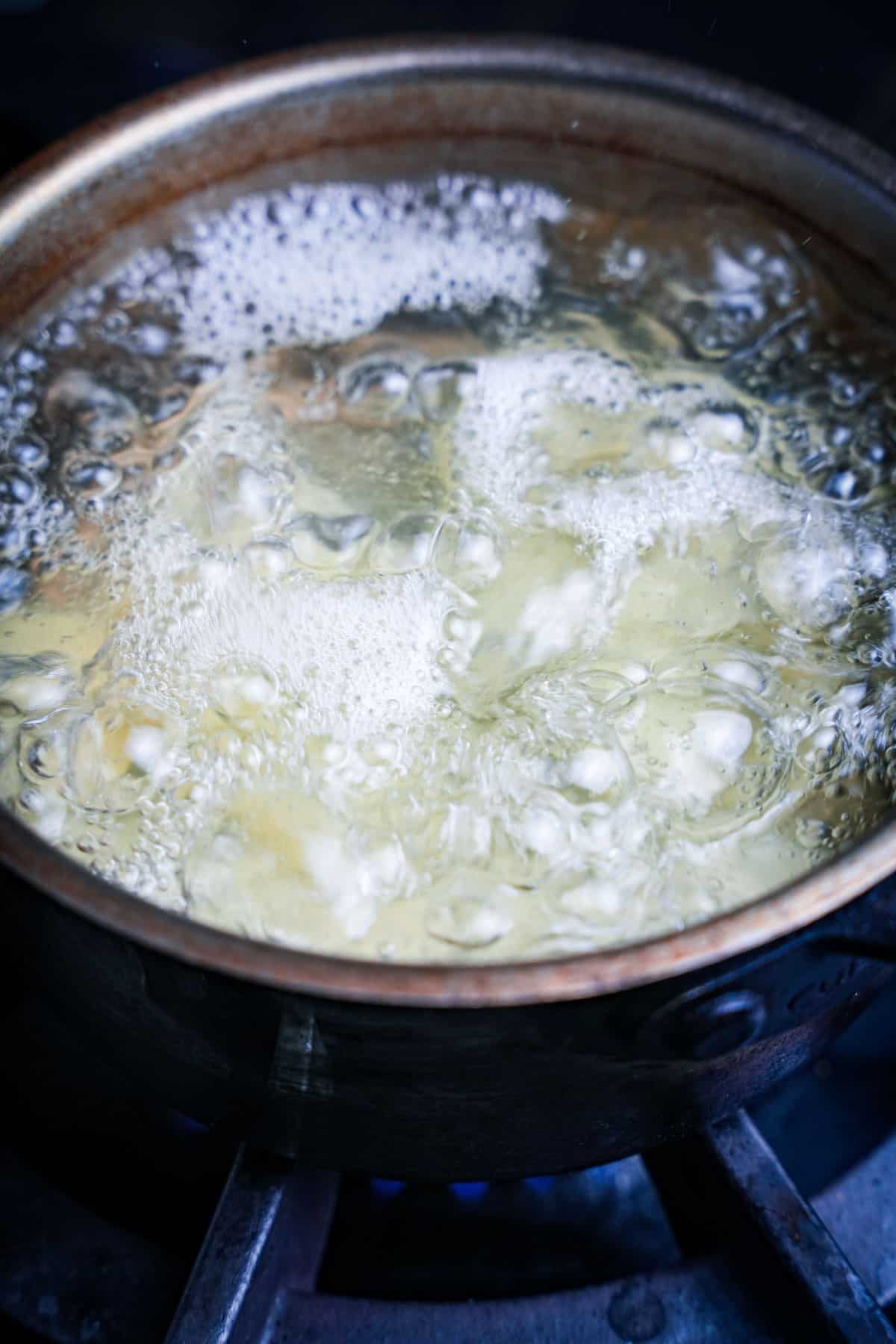
Step 2
Next, cook large diced potatoes in a pot of boiling water until fork tender. Drain and set aside.
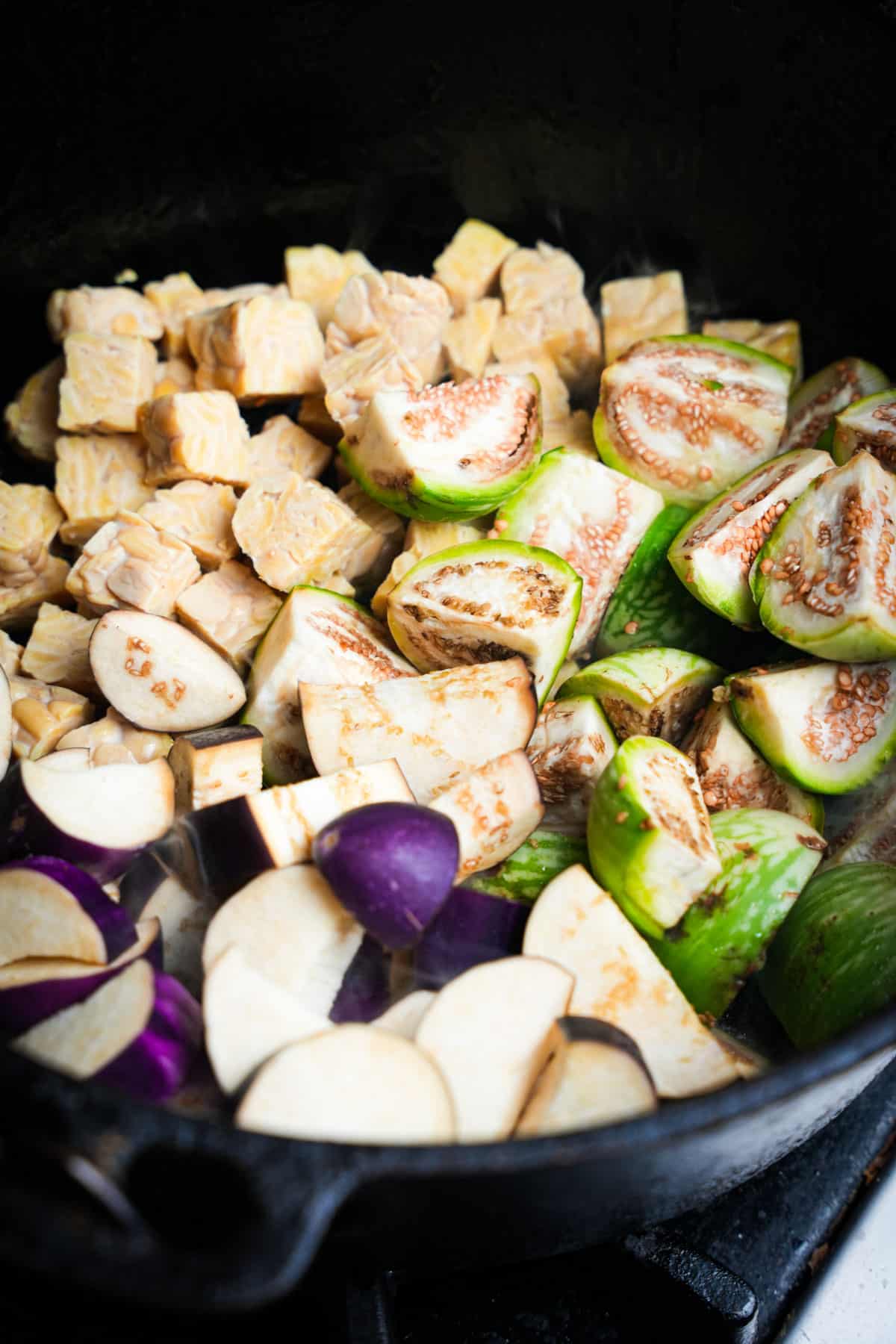
Step 3
Meanwhile, heat oil in a wok or Dutch oven over high heat for 60 seconds. Add tempeh and eggplant and sauté, stirring regularly for eight minutes until evenly browned.

Step 4
Stir in the tomatoes, and spice paste and sauté for an additional two minutes until evenly distributed.
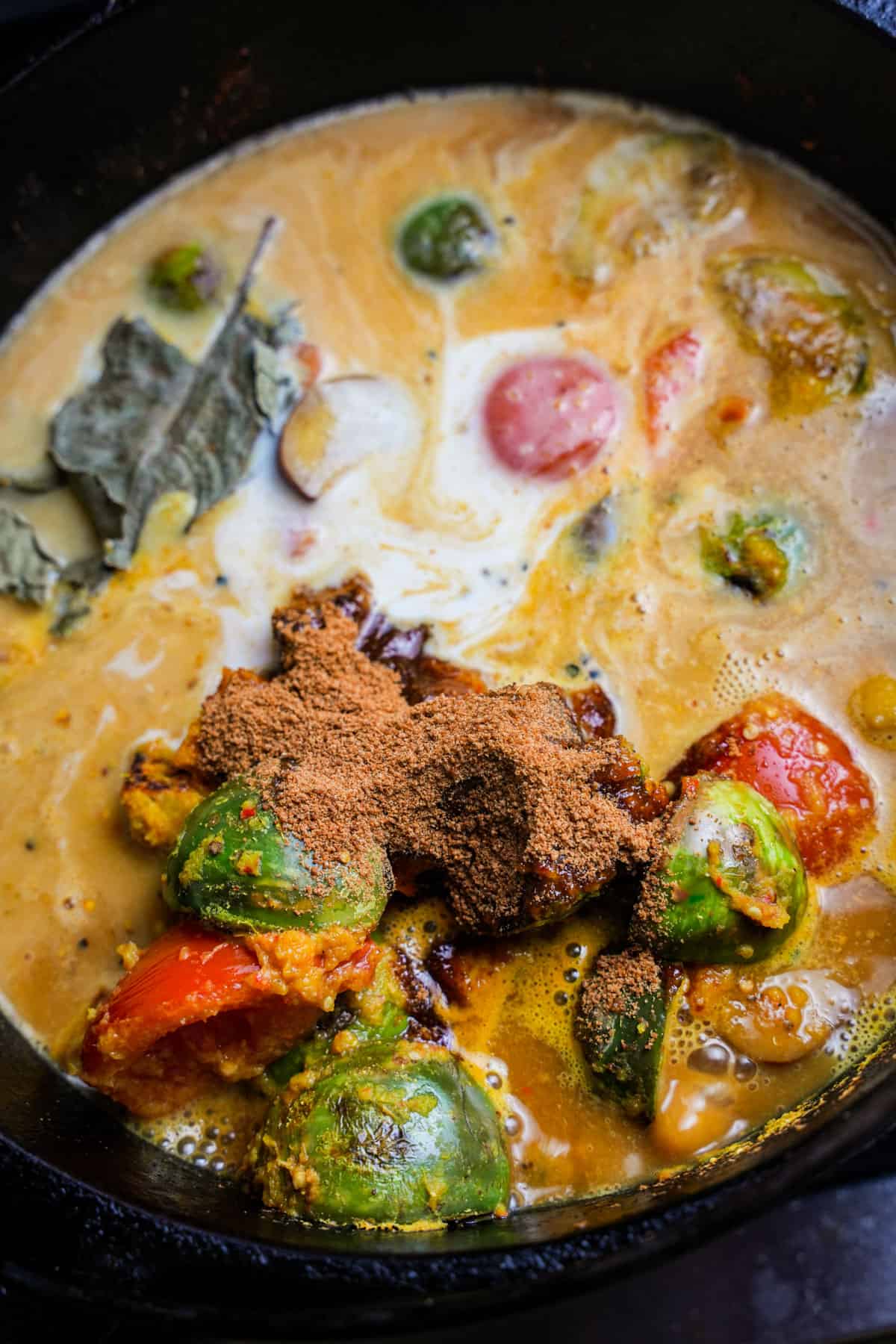
Step 5
Add coconut milk, water, salt, coconut sugar, and Indonesian bay leaves. Bring the mixture to a boil.

Step 6
Once boiling, add pre-cooked potatoes, snake beans, and optional extra chilies. Cook for an additional four minutes over medium heat until all vegetables are fully cooked.

Step 7
Check the eggplant and beans before serving. They should be tender and soft enough to eat. I can't stand undercooked eggplant, and you can't either!
To serve, ladle the soup into individual bowls and top with chunks of lontong, sambal oelek, cilantro, and scallions.
💡Serving Ideas
This soup makes a great centerpiece to a southeast Asian feast!
The first obvious thing to have with this is Lontong. You can buy them in some well-stocked Asian markets, or follow my easy recipe for making lontong at home.
Serve it over Indonesian coconut rice, with spicy cucumbers, or even vegan bulgogi and kimchi fried rice on the side. Serve it with a bowl of mie goreng, bihun goreng, sambal goreng, or bami goreng. Dip crispy rice dumplings or even onion bhaji into it. The options are so wide with what goes amazing with this lovely fragrant stew. You can definitely serve an Indonesian dessert afterwards such as tupig or kuih dadar.

👉Top tip
Don’t rush the eggplant. Nothing. NOTHING is worse than undercooked eggplant. Well, probably yeah there are some things in life worse than that, but please make sure your eggplant is thoroughly cooked through before you serve this stew!
🤷♀️FAQ
Sayur Lodeh, the soup component of the dish, is a flavorful and nutritious broth made from coconut milk, spices, and various vegetables such as eggplant, snake beans, and cabbage. It is believed that Sayur Lodeh originated from the Javanese community, who have a rich history of using coconut milk in their cuisine.
Lontong, a compressed rice cake cooked in a banana leaf, has been a staple in Indonesian cuisine for centuries. It is believed that the dish originated from the need to preserve rice during long journeys or during times of scarcity. The compressed rice cakes could be stored for a long time without spoiling, making them a popular food item for travelers and farmers.
Lontong Sayur Lodeh is pronounced as "lawn-tong sah-yur low-deh" with the stress on the second syllable of each word.
In Indonesian, "lontong" refers to the compressed rice cake that is used in the dish, while "sayur" means vegetables, and "lodeh" refers to the coconut milk-based soup. Therefore, the name of the dish literally translates to "vegetables in coconut milk soup with compressed rice cake".
I mean, yes, technically you can, but it will suck. Especially the eggplant. Sucky city. However, you can totally refrigerate it for up to four days, and here is how:
❄️Refrigeration
Allow the soup to cool to room temperature.
Transfer the soup to an airtight container.
Store the soup in the refrigerator for up to 4 days.
🔥Reheating on the Stove Top:
Remove the soup from the refrigerator and let it sit at room temperature for 10-15 minutes.
Pour the soup into a pot and place it on the stovetop.
Heat the soup on medium heat, stirring occasionally until it reaches a simmer.
Reduce the heat to low and let the soup simmer for 5-10 minutes, or until it is heated through.
Add the lontong and garnishes when serving.
☢️Reheating in the Microwave:
Remove the soup from the refrigerator and transfer it to a microwave-safe container.
Cover the container with a lid or microwave-safe wrap, leaving a small opening for steam to escape.
Heat the soup in the microwave on high for 1-2 minutes, depending on your microwave's power.
Stop and stir the soup every 30 seconds to ensure that it is heating evenly.
Add the lontong and garnishes when serving.
Note: The lontong and garnishes should not be stored in the soup, as they will become mushy and lose their texture. It is best to store them separately and add them to the soup when serving.
💣 Bangin' dishes to smash with sayur lodeh:
Say Hi on Social! 👋
Follow me on Instagram & Facebook for more recipes.
❤️Love this recipe? It helps me out greatly if you leave a 5-star 🌟🌟🌟🌟🌟rating in the recipe card below and maybe even leave me a lovey-dovey comment too!

Lontong Sayur Lodeh (Indonesian Vegetable Stew With Compressed Rice Cakes)
Equipment
- ladel
Ingredients
Spice paste ingredients:
- 5 shallots or 1 medium red onion diced
- 3 cloves garlic
- 1 inch 2.5 cm. galangal
- ½ inch fresh turmeric or 1 teaspoon turmeric powder
- 1 teaspoon ground coriander
- 4 Birds Eye chilies or to taste
- 2 tablespoons lemon juice
Soup:
- 1 medium size russet potato peeled and diced into 1-inch (2.5 cm.) pieces
- 3 tablespoon oil
- 14 oz. tempeh cut into 1cm cubes
- 1 Chinese eggplant cut in half the long way, and sliced in 1 cm. sections
- 6 Thai eggplant quartered
- 2 small tomatoes quartered
- 13.5 oz coconut milk
- 3 ⅓ cups 800 ml. unsalted vegetable stock, or water
- 2 teaspoons salt or to taste
- 2 tablespoons coconut sugar palm sugar, or brown sugar
- 4 Indonesian daun salam Indonesian bay leaves, or two regular bay leaves
- 8 snake beans long beans, or string beans cut into 2-inch sections
- 2 additional whole bird’s eye chilies optional
To serve:
- 2 lontongs cut into large pieces
- Sambal Oelek to taste
- Cilantro leaves
- Thinly sliced scallions
Instructions
- Place the shallots, garlic, galangal, turmeric, coriander, chilies, and lemon juice into a blender, and blend on high speed for 90 seconds until a paste is formed.
- Place the large diced potatoes into a pot of water and bring them to a boil. Cook them until fork tender and then drain and set aside.
- While the potatoes are cooking, heat the oil in a wok or dutch oven over a high flame for 60 seconds. When the oil is hot, add the tempeh and eggplant. Sauté, stirring regularly, for eight minutes until the tempeh and eggplant are evenly browned all over.
- Stir in the tomatoes and spice paste, and sauté stirring for two more minutes, until the paste is distributed all over the tempeh and eggplant.
- Add the coconut milk, vegetable stock (or water), salt, coconut sugar, and Indonesian bay leaves. Bring the pot to a boil.
- When the pot has reached a boil, and the largest pieces of eggplant feel tender and buttery, add the pre-cooked potatoes, snake beans, and optional extra chilies. Reduce heat to medium and cook for four more minutes until the vegetables are fully cooked.
- Serve the soup in individual bowls, topped with chunks of lontong, sambal oelek, cilantro and scallions.




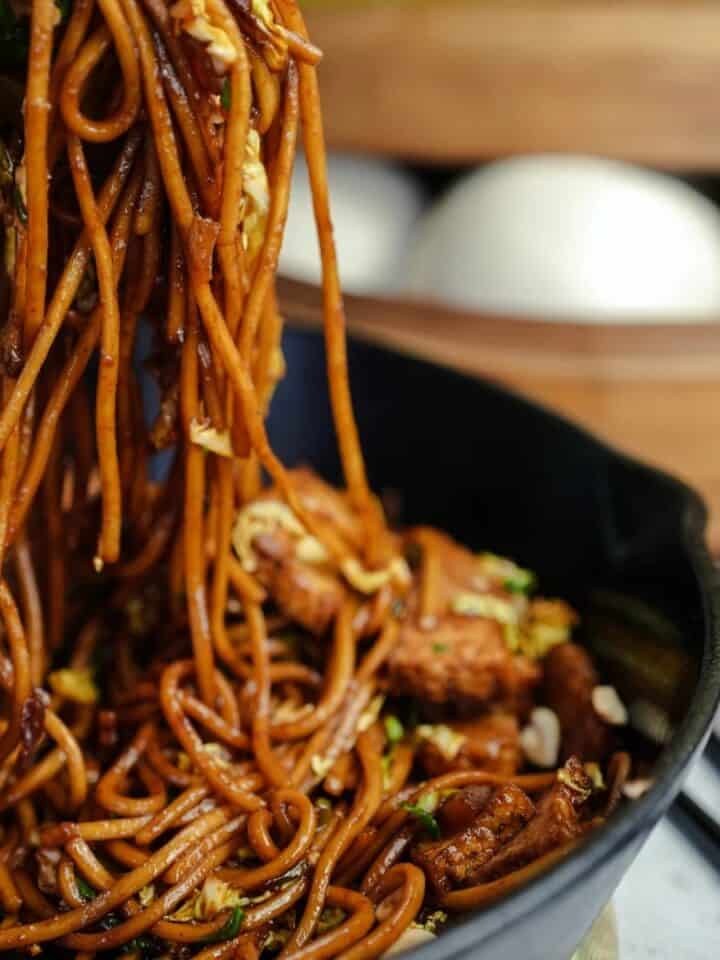

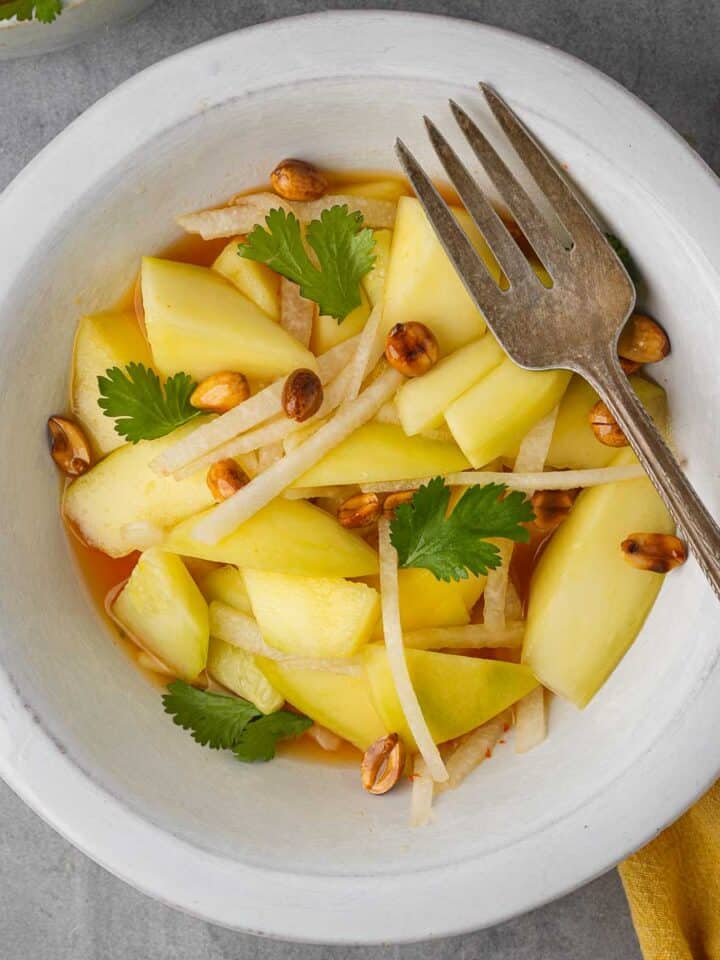



Gg
Super amazing! What a great recipe! The flavors are so good and it was not difficult to make. I had the great fortune to have some tempeh homemade by an Indonesian friend and with this recipe it was so flavorful. I had to make a few subs due to ingredient availability (ginger root for galangal, fresh cilantro for coriander) and it still came out fantastic. Great vegan eggplant.
Adam Sobel
So glad you loved it! With homemade tempeh too? Such a treat! I'm a little jealous <3
Heva
I recently tried this delicious vegan recipe and it exceeded my expectations! The combination of fresh ingredients and creative flavors was simply amazing. Not only did it taste fantastic, but it also left me feeling satisfied and nourished. This recipe has definitely made me appreciate the power of plant-based cooking. Highly recommend giving it a try!